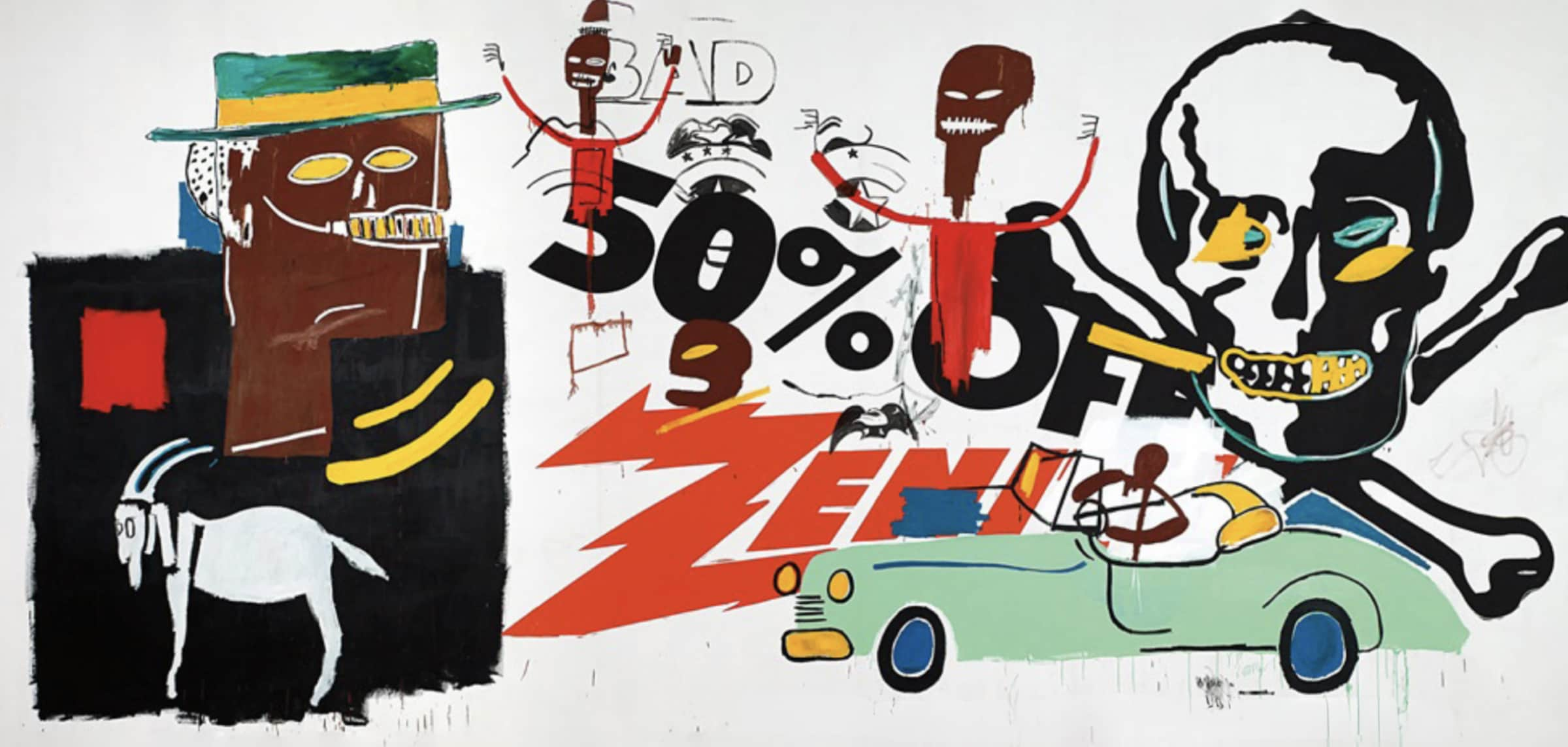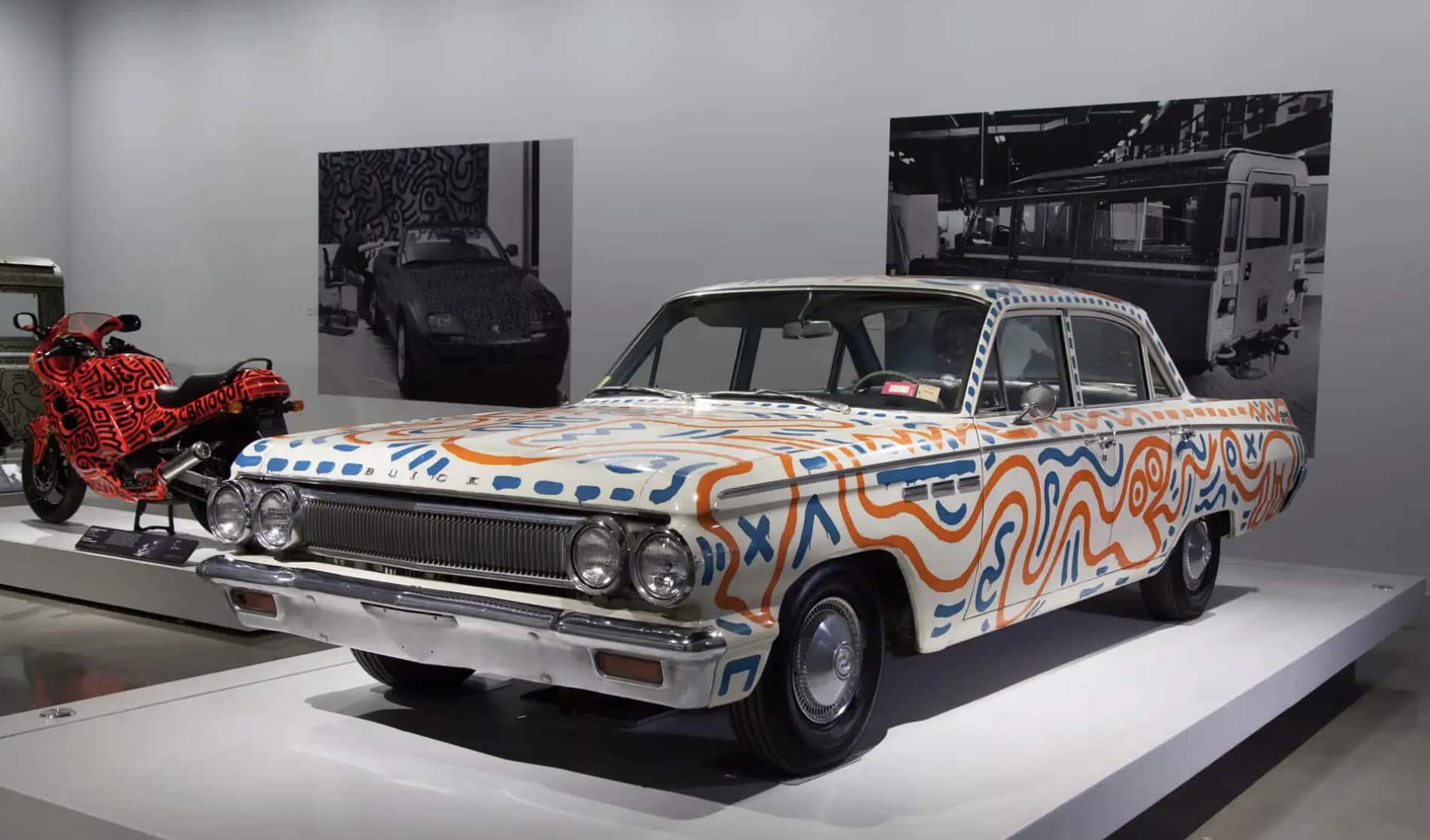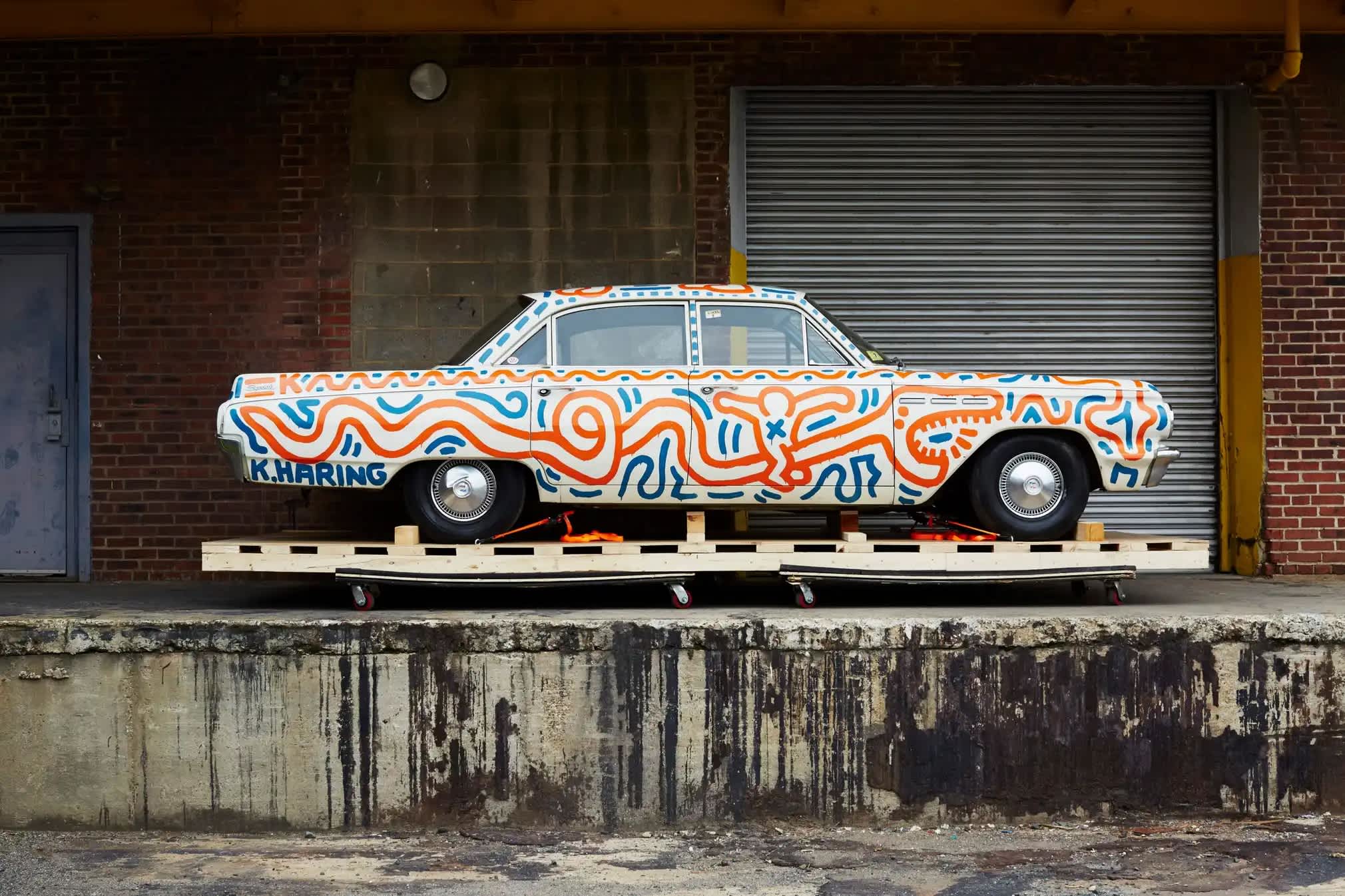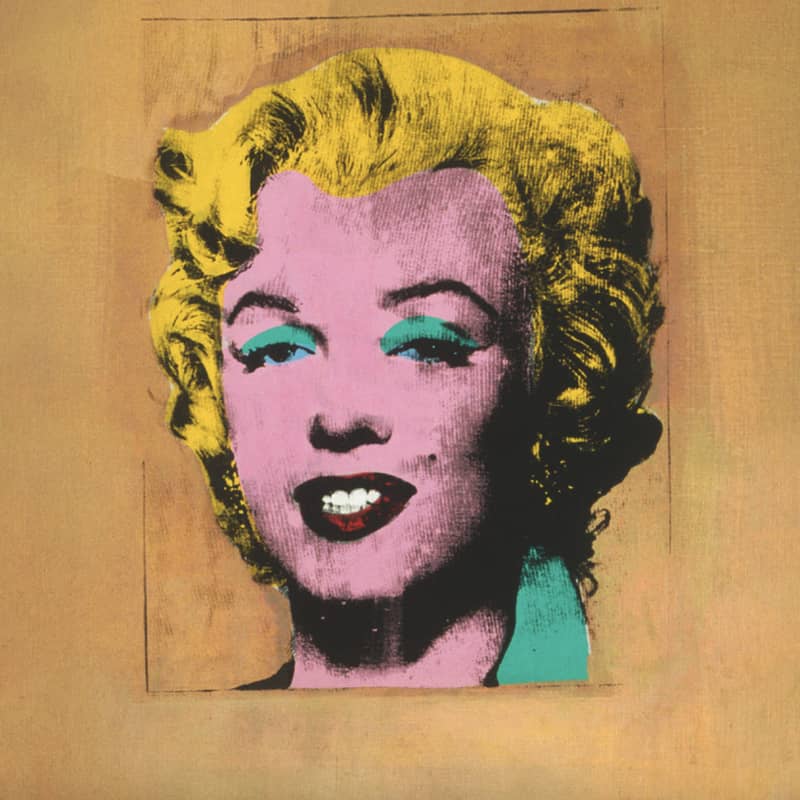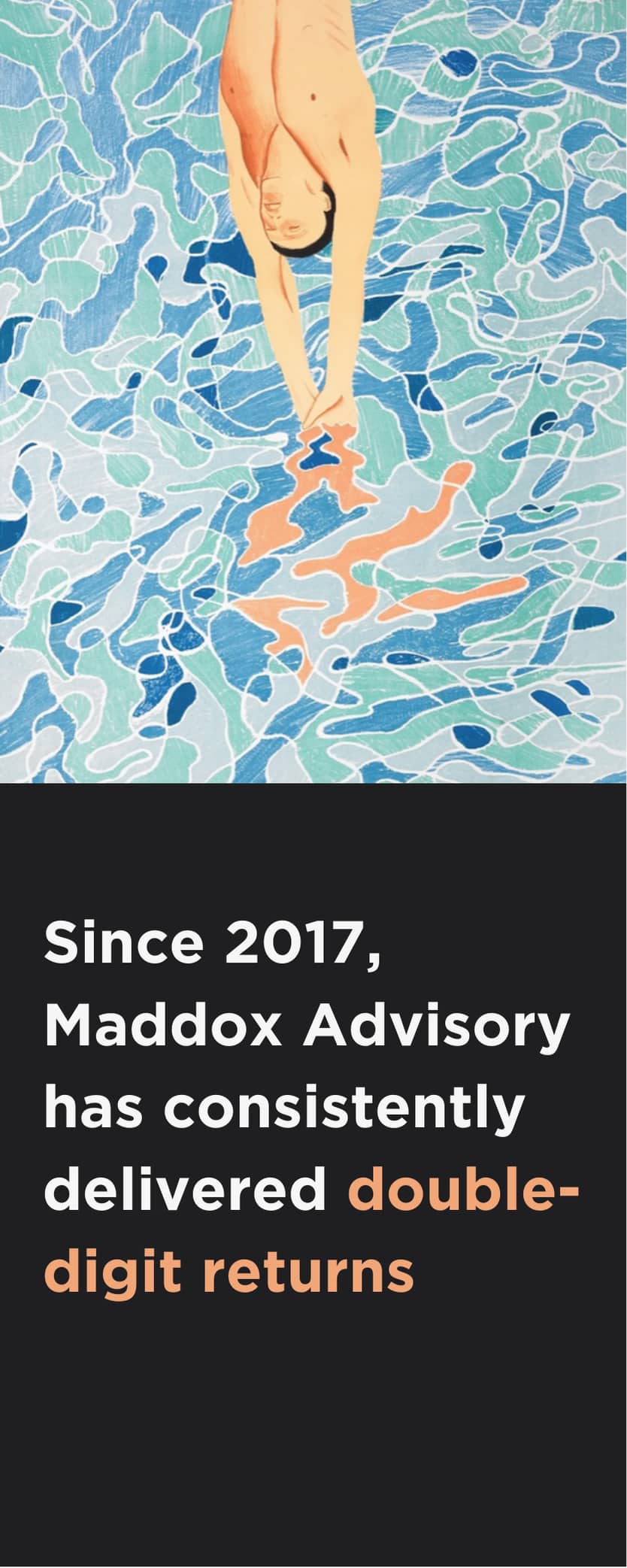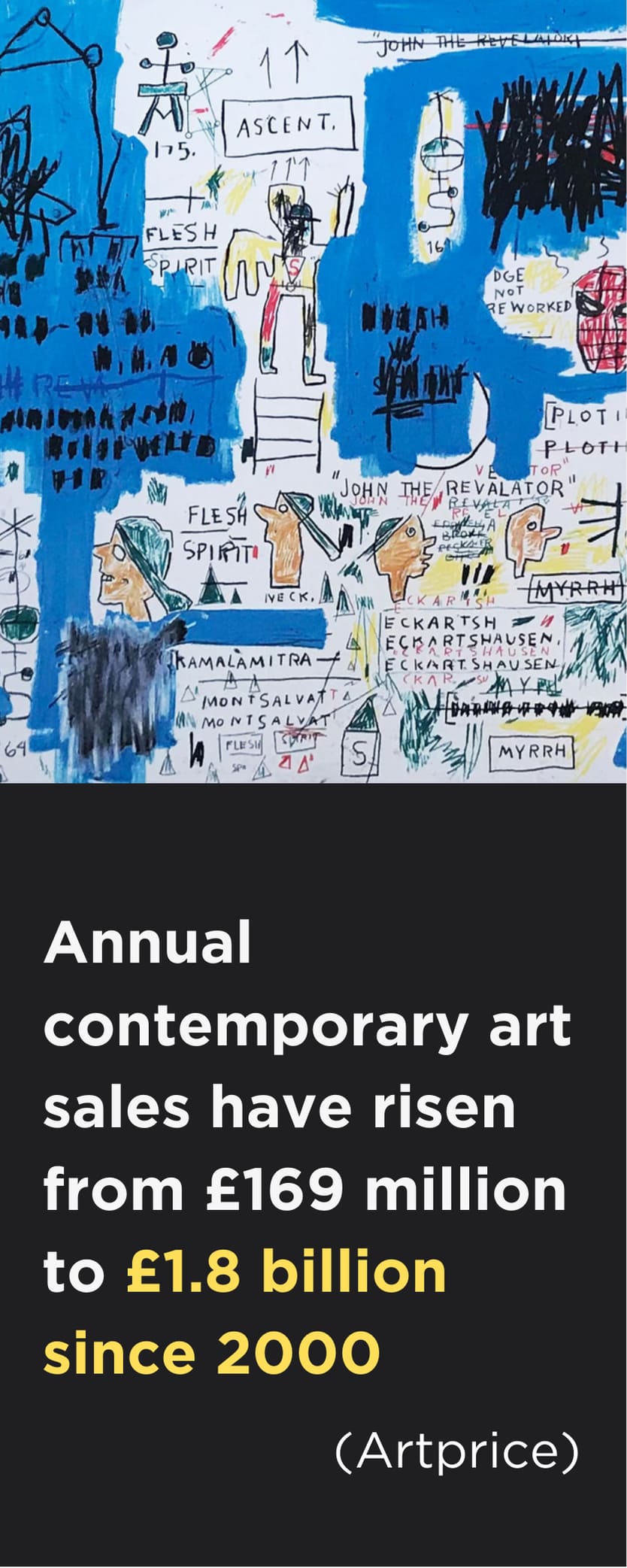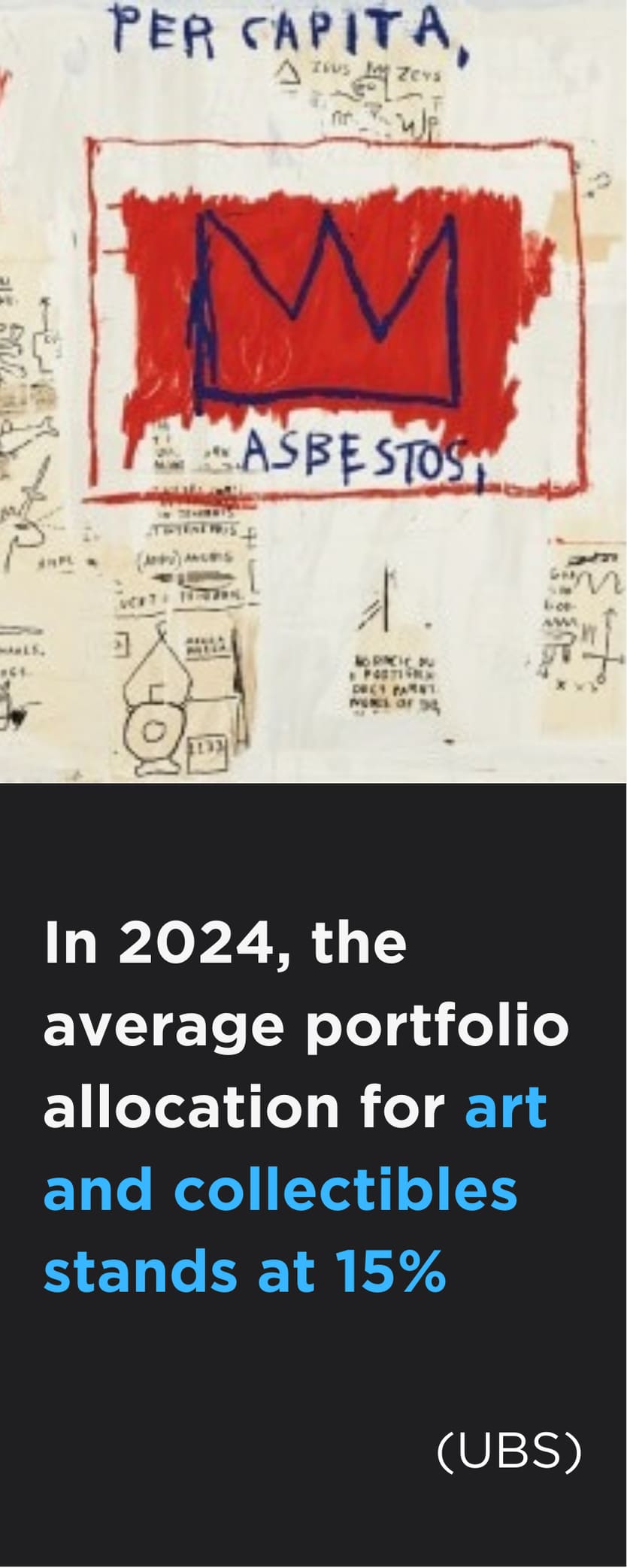The thrill of the open road. The quiet power of a masterpiece. Both art and cars offer collectors a sense of joy and prestige—but which holds greater investment potential? In the last of our Art vs Alternative Investments series, we explore art vs classic car investment, weighing appreciation, liquidity, and long-term value to determine which passion asset can drive lasting success.
Introduction: The Allure of Investing in Classic Cars & Fine Art
There’s a unique thrill that comes with owning a masterpiece, whether it’s a work of art or classic car. Both represent more than just investments—they are symbols of passion, prestige and the pursuit of beauty in tangible form. The allure of fine art lies in its timeless ability to capture a moment in time, stir emotions and tell stories, while classic car investment offers a heady mix of craftsmanship, nostalgia and an engine’s unmistakable roar.
In this article, we pit these two icons of passion investing against each other, exploring the art vs classic car investment debate in more detail. How do they measure up across key factors such as value appreciation, liquidity, costs and market stability?
Keith Haring, Untitled (automobile), 1986 – 1963 Buick Special
1. The Pros & Cons of Classic Car Investment
Like a masterpiece by an artist from days gone by, classic cars are works of art. Collectors buy them for their aesthetics, first and foremost, but the joy they bring goes far beyond their appearance. The nostalgia in owning a piece of motoring history is exhilarating, as is the purr of a finely tuned engine, which is why people gravitate towards this passion investment. But classic car investment is not without its challenges. Let’s take a look at the benefits and disadvantages in more detail.
Benefits of Classic Car Investment
If you are tempted to invest in classic cars, you’re not alone. The market is driven by a passionate group of collectors who view their assets very differently to, say, someone investing in gold. With consistently strong demand among enthusiasts, especially for rare, limited-production models, classic car investment offers the chance to connect with a global network of fellow aficionados who value the artisanship, engineering and nostalgia these vehicles represent.
Unlike traditional stocks or bonds, classic cars are tangible, usable assets. Owners who invest in vintage cars can take these vehicles on the open road, attend exclusive rallies and display them at car shows. This blend of utility and status elevates classic cars beyond mere investments—they become lifestyle assets that offer both joy and prestige.
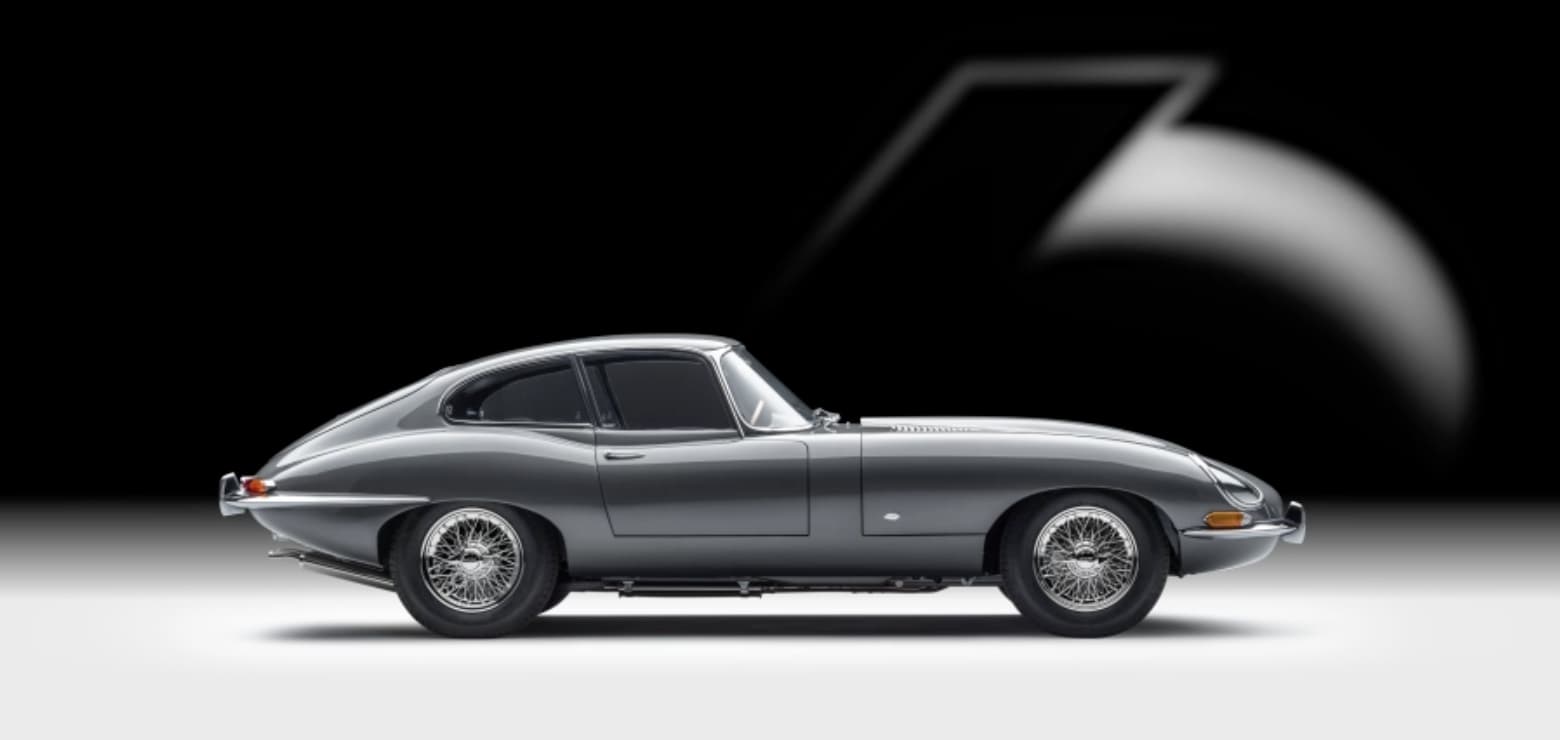
E-Type 60 Restoration Collection | Jaguar Classic Cars
Historical and cultural value play a pivotal role in the desirability of certain collectible cars. Regularly cited as the best classic car for investment is the 1961 Jaguar E-Type—one of the most beautiful vehicles ever made, if you have a cool £250,000 to spare. Similarly, the Ferrari 250 GTO holds legendary status due to its racing pedigree and limited production. More than investments, these cars are living artifacts of history, embodying the design, innovation and spirit of their time.
Reports of short-term gains for rare models are a tempting prospect, with certain classic cars experiencing a sharp spike in value at auction or after restoration. If you are looking for classic cars that will increase in value steadily, vintage Ferraris, Aston Martins and Jaguars have consistently performed well at auction, with some models experiencing exponential growth in value over the years.
Challenges of Investing in Classic Cars
Do classic cars appreciate in value? Contrary to what you may have read, not usually. Unlike art, most classic cars, with the exception of ultra-rare models, lose value over time. With their value driven entirely by demand, depreciation and market volatility pose significant risks for classic car investors. Highly sensitive to changing trends, economic conditions and changing collector preferences, a model that is greatly sought after today has the potential to lose its appeal tomorrow if tastes shift, new icons emerge or its historical significance diminishes in the eyes of collectors.
With classic car investment, condition is everything and restoration is expensive, often eye-wateringly so. It costs to maintain the condition of vintage cars—often a lot because they require specialist care. The same goes for restoration. Be prepared to pour a huge amount of time and money into your project, with no guarantee of a return on that expenditure. Factor in the inevitable repairs, insurance and climate-controlled storage required to prevent damage to your investment and the costs quickly begin to stack up.
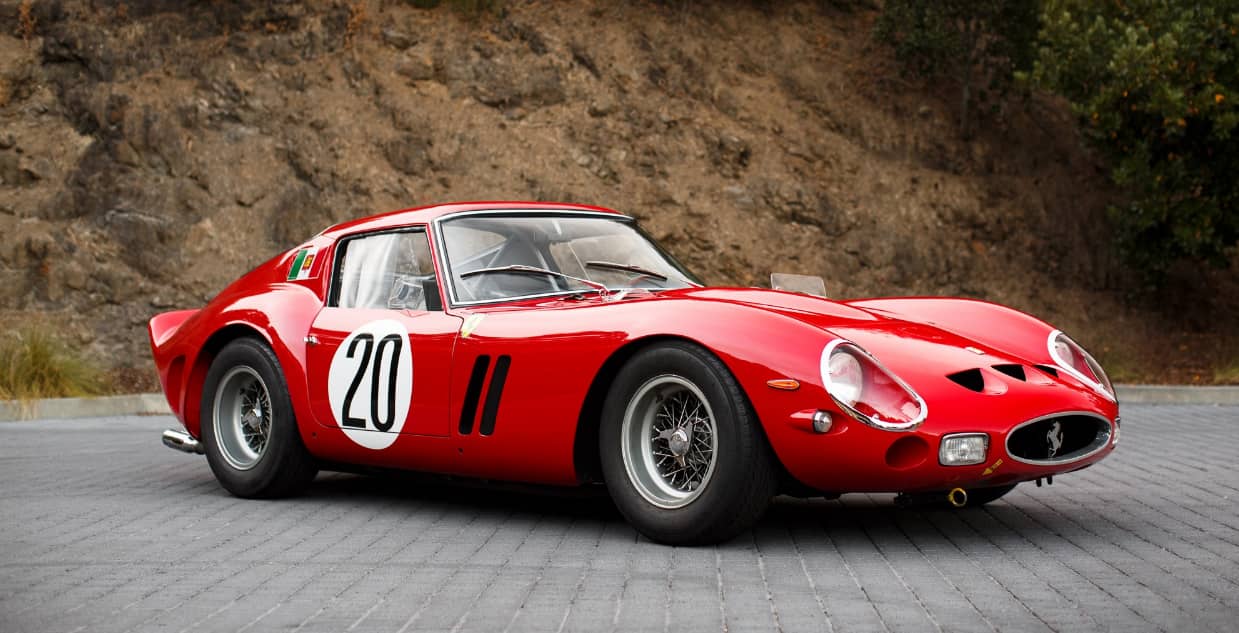
Ferrari 250 GTO - 1963
Authenticity and condition are crucial when asking, "Are classic cars a good investment?" because they directly impact value and desirability. Originality and provenance are key for serious collectors, with heavy modifications often devaluing a car or hindering its sale. Even minor discrepancies, like non-original parts or improper restorations, can reduce resale value. Condition is equally important—rust, wear or incomplete documentation can deter buyers and make a car much less competitive in the market.
Classic cars also suffer from limited liquidity. This means it can take a long time to find a buyer, due to a smaller pool of buyers and the specialised nature of the market. Unlike stocks or bonds, which can be quickly traded on global exchanges, classic cars require more time and effort to sell, often relying on niche auction houses, private sales or word-of-mouth within the collector community.
2. The Pros & Cons of Fine Art Investment
When you invest in fine art, it is more than a financial decision; it’s a deeply personal pursuit that combines passion with the potential for lasting value. For many collectors, the joy of art investment goes beyond its monetary worth—it’s about owning a piece of human expression that carries stories, ideas, cultural value and history. Let’s explore the benefits of investing in art in more detail before outlining some of the challenges.
Benefits of Investing in Art
Of all the luxury assets that are touted as potential high yield alternative investments, such as gold, fine wine, whiskey and diamonds, art offers a more stable and potentially lucrative path, with fewer associated costs and risks.
Since 2018, the Artprice100 index has seen a remarkable 56% increase, outpacing the Hagerty Classic Car Index, which rose by 21% over the same period. Particularly impressive has been the performance of blue chip art investment, which has outperformed many traditional assets in terms of long-term value growth. This strong historical appreciation underscores the increasing allure of art as a profitable avenue for luxury asset investing.
Another benefit of fine art investment is its low maintenance costs. Compared to classic cars, art requires very little upkeep. With no mechanical parts, fuel or repairs to consider, maintaining the condition of your art involves minimal effort and outlay.
Zenith (1985) by Jean-Michel Basquiat and Andy Warhol
One of the most unique benefits of investing in art is the power of provenance, which can significantly enhance the value of a piece over time. Provenance refers to the documented history of ownership and exhibitions, and it plays a crucial role in establishing an artwork's authenticity and cultural importance.
The provenance of art can be further boosted when it is loaned to prestigious museums or included in high-profile exhibitions, increasing its visibility and amplifying its historical significance. This has the effect of elevating the artist's reputation while boosting an artwork's appeal to collectors.
From a more practical perspective, art has long been viewed as a reliable store of wealth, offering a safeguard against economic downturns and serving as an effective hedge against inflation. Unlike traditional assets that may lose value during periods of financial instability, investment-grade art often retains or even appreciates in value. Its independence from currency fluctuations and stock market volatility makes it an attractive option for preserving wealth over the long term, particularly in uncertain economic climates.
Finally, one of the most profound benefits of collecting art is the emotional connection it fosters. Unlike other investments, art has the unique ability to resonate deeply on a personal level. A painting can quite literally transform your space, serving as a daily source of joy, reflection and inspiration.
Challenges of Fine Art Investment
While investing in art can be extremely rewarding, it comes with several challenges that potential investors must bear in mind. To succeed as an art investor, it’s essential to balance personal taste with market insight. Just like classic car ownership, one of the biggest dangers of art investment is making decisions without doing the research. To ensure your investments are both financially and emotionally rewarding, it is vital to consider factors like provenance, artist reputation, market trends and historical performance.
Following on from this, authentication and provenance challenges present significant risks for art investors. When the legitimacy of an artwork comes into question, its value can plummet dramatically. Failing to verify an artwork’s authenticity prior to purchase can result in costly legal complications and substantial financial losses. Clear and documented ownership history not only confirms the integrity of a piece but also plays a vital role in maintaining its market value and appeal to future buyers.
Art also suffers from a lack of liquidity, but to a much lesser extent than classic cars. It will likely take time to find the right buyer for your art, however the pathways to reach them are much broader and better established. Private collectors are often on the lookout for exceptional pieces to add to their collections, while galleries serve as valuable intermediaries, using their connections and expertise to broker sales, or offer art consignment services. For those seeking a larger, global audience, prestigious auction houses like Sotheby’s and Christie’s offer renowned sales platforms.
Art is not a get-rich-quick asset. To maximise your returns, it is important to factor a longer holding period into your investment plan. Historically, art has appreciated at a steady rate, with the biggest gains often seen 10+ years after initial investment. This can be a drawback for investors seeking quick returns or needing to access their capital in a hurry.
Finally, while art doesn’t come with a mountain of extra costs, investors must factor in paying for climate-controlled storage if they are not hanging their art at home. Like all passion assets, comprehensive insurance is also an essential purchase.
3. Comparative Analysis: Art vs Classic Car Investment
From market trends to maintenance costs, let’s take a deeper dive into the facts and figures that are driving the performance of each alternative asset class.
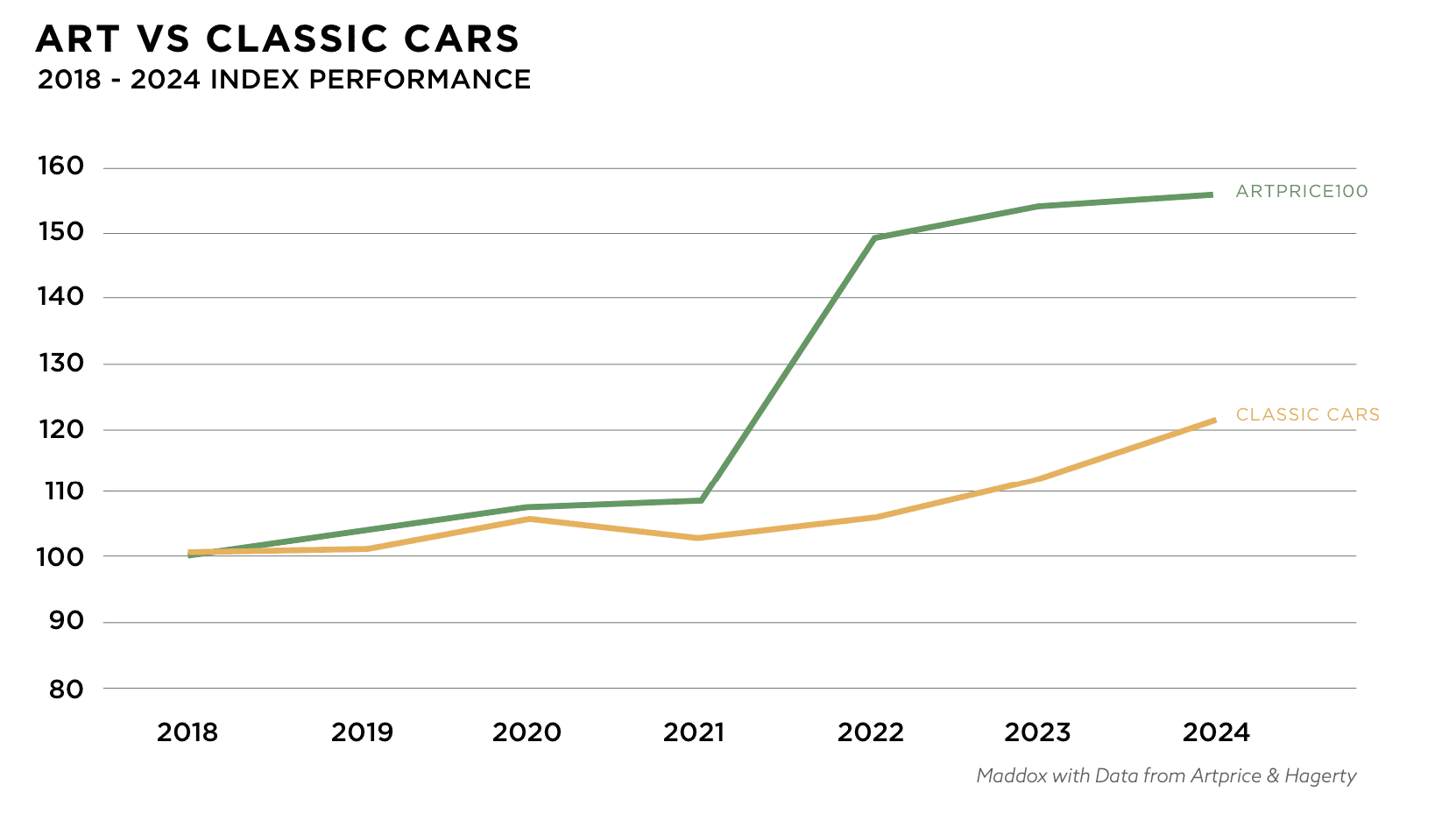
Performance & Market Trends: Which Investment Delivers Stronger Returns?
The current climate for classic cars is not looking positive, with Hagerty's UK classic car indices all dropping in 2024. While some rare models have skyrocketed in value, the classic car market has proven to be highly unpredictable in recent years, with Brexit only exacerbating this. Before Brexit, EU buyers could very easily import a British classic. Now, the buyer must be prepared to deal with complex import rules and pay import taxes.
The question, are antique cars a good investment?, might have been met with a positive response not so long ago, but times are changing. Some are predicting a big drop in prices for older classic cars because the demographic of collectors is changing. A new generation of enthusiasts is shunning 1960s models, preferring cars from the 1980s, 1990s, and 2000s, such as Porsche 911 Turbos. Has the historic classic car bubble burst? Many think so. Add to this the fact that maintenance costs eat into profits and this makes classic cars an increasingly high-risk investment for long-term gains.
Art, on the other hand, has shown consistent, long-term appreciation, with blue chip works in particular delivering steady value growth. Unlike cars, which can be replaced or restored, it is art’s uniqueness and scarcity that are the key drivers of its value.
Liquidity & Resale Value: Which Asset Is Easier to Sell?
Set aside the most iconic models and most classic cars are not easy to resell. you are looking at months and even years because the owner is totally reliant on auctions and niche buyers.
With the market for blue chip artists constantly growing, it is considerably easier to sell art by renowned artists, thanks to a well-established global network of international auction houses, galleries and private collectors.
Costs & Maintenance: The Hidden Expenses of Classic Cars vs. Art
How much do classic cars appreciate? When you’re doing the sums, don’t forget to subtract the long list of hidden expenses that accompany classic car investment. Annual maintenance charges, repairs, insurance and climate-controlled storage costs quickly add up, then there are the depreciation risks. Driving a classic car inevitably results in wear and tear, and without proper maintenance, this can substantially erode its value and potential profits over time.
Art is far less demanding in terms of ongoing expenses, with minimal storage and insurance costs compared to classic cars. Displaying art is as effortless as hanging it on a wall, with no risk of diminishing its value or affecting its condition.
Which Passion Investment Is More Future-Proof?
If the topic of future-proofing your passion investments is at the front of your mind, the art market holds a distinct advantage over classic cars. Art is largely immune to technological shifts, with its value rooted in its timeless appeal and cultural significance. Not so with classic cars, which are more vulnerable to changing automotive trends, particularly as the industry moves toward electric and autonomous vehicles. This evolution could impact the desirability of fuel-powered classics in the long term.
Climate regulations and growing sustainability concerns also pose challenges for classic car investment. As governments push for stricter emissions standards and promote greener alternatives, the ownership and use of traditional fuel-powered vehicles may become less practical, potentially dampening demand among future generations of collectors.
Meanwhile, the rise of digital art and NFTs is expanding the possibilities within the art market, offering new routes for investment and appealing to a tech-savvy audience. Unlike classic cars, which rely solely on collector demand for valuation, the art market continues to evolve, creating opportunities that could sustain and even increase its appeal over time.
Keith Haring, Untitled (automobile), 1986 – 1963 Buick Special. © Collection of Larry Warsh Courtesy of VENUS LA/Keith Haring Foundation
Conclusion: Why Maddox Gallery Recommends Art Investment
Classic cars offer undeniable emotional and lifestyle value. In the art vs classic car investment debate, however, art comes out on top as the superior choice for long-term investment. Maddox Gallery confidently recommends art investment due to its consistent outperformance in key areas such as value appreciation, liquidity and cost-efficiency. Unlike classic cars, which face market volatility, high maintenance costs and the looming impact of technological and environmental changes, art remains a stable and enduring asset class.
Art provides a unique combination of aesthetic pleasure, cultural significance and financial reliability, making it a powerful tool for wealth preservation. Whether displayed in your home or secured in a private collection, investment-grade art by blue-chip artists offers a tangible, timeless store of value, further strengthened by a growing global market and robust demand.
For those seeking not only to diversify their portfolio but to invest in assets that resonate with meaning, art delivers unparalleled rewards. Its ability to transcend trends, resist depreciation and thrive across generations positions it as the ultimate passion investment—one that combines beauty, prestige and financial security.
Explore the other articles in the Alternative Investments series:
The Maddox Gallery Advantage
Maddox Gallery was founded to help clients overcome the challenges of fine art investment, such as authentication and identifying the artists with the highest potential for substantial returns. A global market leader in art market analysis, our goal is to assist investors in devising the most profitable and satisfying art investment strategies when navigating the multi-billion-dollar art industry.
Maddox Art Advisory is designed as a space to discover the joy of owning and collecting art, guided by expert advisors. With unrivalled access to the Contemporary art world, our bespoke services are carefully tailored according to your risk tolerance and return objectives, taking into consideration asset protection, capital preservation, diversification and your personal taste.
Experts in portfolio management, we are dedicated to sourcing the highest-quality investment art for our clients, with a certificate of authentication provided with every piece of art for sale. We also oversee the delivery of art to a client’s home or can arrange specialist storage in a temperature-controlled facility, depending on their preference.
To learn more about the benefits of art investment, explore investment art for sale and begin building your art portfolio. Book your private consultation with a Maddox Gallery Art Advisor.
The value of investments can go down as well as up, and past performance is not guarantee of future performance. Return figures shown are gross; fees, including a 20% performance commission, may apply. Liquidity is not guaranteed. Terms, limitations, and withdrawal conditions apply. Minimum recommended investment is £20,000. Maddox Advisory is not FCA-regulated and does not give financial advice. Seek independent advice before investing.
